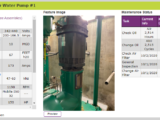You Don’t Have to be a Spy to Integrate an Alert System
Pros & Cons of Integrating Three Types of Alert Systems

In TV shows like Mission: Impossible, secret government agents rely on technology to save the world. The characters spout random computer terms as if they are common phrases. Personnel in the industrial world might think they need to be spies to integrate their alert system with their existing automation system, but they don’t. They just need to know about their system and have a general understanding of alert system and integration options.
Methods of Integration
For industrial applications, an alert system has two methods of integrating with an existing automation system, which includes PLC and SCADA packages. The first method is direct to equipment via a hardwired connection. The second method is through direct communications with the automation platform. The chosen alert system should allow for both methods. These alert systems include Autodialers, SCADA Messaging Software, and Cloud Solutions.
Integrating Autodialer Alert Systems
The generic term in the industrial world is an Autodialer. Autodialers have been available for many years. They interface to equipment via hardwiring (wired to contacts). They come with a fixed set of inputs, are usually programmed via a local interface on the device, and connect to a phone line or network.
Pros:
- Alerts are maintained if SCADA is down. They operate independently from the automation system. So if there is an issue with automation hardware or software, they are still functioning.
- They can be cost effective if the number of inputs required is small.
- They can usually be installed by a qualified electrician.
Cons:
- In the past, these devices have been connected to a dedicated landline phone line which has a hidden monthly cost. However, some of the newer systems can connect to your network where the costs are included in other activities and can send out text messages or emails.
- They provide limited or no additional information when an issue occurs.
- They have limited scalability capabilities for future expansion.
- They usually have no way of letting you know when they are not working.
- They require a manual to program and must be done locally.
- They provide limited information about an individual alert.
- You must use a single phone or change programming locally with changes in personnel.
Integrating SCADA Messaging Alert Systems
A SCADA messaging solution (On-Premise) for industrial alerts and notifications typically lives on the OT (Operation Technology) network and connects directly to the SCADA system. It is usually a separate piece of software installed directly on a SCADA computer or server. It communicates to the SCADA package via OPC or through direct hooks to the specific system.
Pros:
- They provide the capability for a large number of alerts.
- They allow for very specific information about an individual alert.
- The price per point of alert can be very cost effective.
Cons:
- They require that some part of the SCADA system be connected to the OT network. Although with proper configuration this can yield a secure system, it is still a point of vulnerability.
- They usually require a high level of knowledge to manage.
- They can only be managed on-site from the OT network.
- When the SCADA is down, so is the notification system.
- They usually require a software upgrade when the SCADA software or machine operating system is upgraded.
- Installation requires a higher level of expertise than a hardware solution.
Integrating Cloud Alert Systems
There is no system that can interface with your automation platform without touching it in some way. A cloud-based solution is no different. It requires a piece of hardware or software to integrate with your system. Like an autodialer, it may interface via a hardwired connection to your equipment. Like a SCADA messaging solution, it could require a piece of software be installed on the SCADA computer or server. It may also be a hardware appliance that sits on the OT network independent of the SCADA computer, but connected to the automation platform directly. From here, the solution sends the information up to the cloud where it is managed and notifications are sent.
General Pros:
- Alerts can be managed from anywhere by an authenticated user – usually by the end users.
- Alert history is stored offsite. No end user management is required.
- They can be redundant to existing SCADA.
- Total Cost of Ownership (TCO) may be lower than on-premise solution over time.
General Cons:
- When you lose your internet connectivity, alerts are down. Many users avoid this by adding a redundant internet connection through secure virtual private cellular network or a second internet provider.
- They have a monthly recurring cost, but the TCO may be lower.
When Using Directly Hardwired Solution:
Pros:
- Alerts are maintained if the SCADA is down.
- They can be cost effective if the number of inputs required is small.
- They can usually be installed by a qualified electrician.
Con:
- They have limited scalability capabilities for future expansion.
When Software is Installed on a SCADA Computer:
Pros:
- They provide the capability for a large number of alerts.
- They allow for very specific information about an individual alert.
- The price per point of alert can be very cost effective.
Cons:
- They require that some part of the SCADA system be connected to the OT network. Although with proper configuration this can yield a secure system, it is still a point of vulnerability.
- When the SCADA is down, so is the notification system.
- They usually require a software upgrade when the SCADA software or machine operating system is upgraded.
- Installation requires a higher level of expertise than a hardware solution.
When Using a Hardware Appliance:
Pros:
- The OT and IT networks can maintain their segregation as a DMZ.
- Alerts are maintained if the SCADA is down.
- Hardware is industrial and requires no software upgrades during its life cycle.
- They provide redundancy to SCADA as a contingency.
Con:
- Installation requires a higher level of expertise than a hardwired solution.
Integration options would benefit secret government agents. Personnel in the industrial world can reap those benefits as well. They just don’t have to worry about saving the world.

Follow us on
About The Author
The President and founder of Data-Command with over 25+ years of business development, 35+ years of automation, and 40+ years of software development experience. In 2005, Data-Command was born from his passion to provide information to municipalities and industry that would have a positive impact on their operations, and he has never lost this passion.


